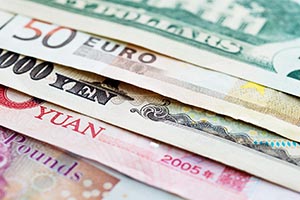
4 benefits to paying foreign suppliers in their own currency

Benefits of billing foreign customers in their own currency

Transition to international ACH

4 ways Request for Payments (RfP) changes consumer bill pay

Future-proofing healthcare treasury through automation

Restaurant surveys show changing customer payment preferences

Enhancing the patient experience through people-centered payments

Digital trends poised to reshape hotel payments

Cashless business pros and cons: Should you make the switch?

Automate escheatment for accounts payable to save time and money

3 benefits of integrated payments in healthcare

More payment options create checkout success

Want AP automation to pay both businesses and consumers?

Meeting healthcare strategy goals with electronic patient refunds

Looking for a better banking solution for global payments and deposits?

Starting the path to digital supplier payments

Transforming AR in B2B companies

Global payments: 4 ways to improve international transactions

Access, flexibility and simplicity: How governments can modernize payments to help their citizens

How the next evolution of consumer bill pay makes it easier to do business

ABCs of APIs: Drive treasury efficiency with real-time connectivity

5 reasons to streamline healthcare accounts payable

Colleges respond to student needs by offering digital payments

Hospitals face cybersecurity risks in surprising new ways

Demystifying ISO 20022

Managing cross-border payments in emerging markets

Creating the ideal patient journey

5 reasons to upgrade B2B payment acceptance methods

Take a fresh look: mass transit is going places

Making the cross-border payment decision: Wire or international ACH?

Drive digital transformation with payments innovation

Standardizing healthcare payments

Integrated payments healthcare benefits

Consolidating payments for healthcare systems

Role of complementary new channels in your payments strategy

Navigate changing consumer behavior with service fees

Modernizing fare payment without leaving any riders behind

Tap-to-pay: Modernizing fare payments pays off for transit agencies and riders

Webinar: Approaching international payment strategies in today’s unpredictable markets.

Escheatment resources: Reporting deadlines for all 50 states

Payment industry trends that are the future of POS

White Castle optimizes payment transactions

Managing the rising costs of payment acceptance with service fees

Three healthcare payment trends that will continue to matter in 2022

Webinar: CSM corporation re-thinks AP

Increase working capital with Commercial Card Optimization

Banking connectivity: Helping businesses deliver the easier, faster, more secure customer experience of the future

Tech tools to keep your restaurant operations running smoothly

Crack the Swift code for sending international wires

Top 3 ways digital payments can transform the patient experience

Automate accounts payable to optimize revenue and payments

A simple guide to set up your online ordering restaurant

ePOS cash register training tips and tricks

Ways prepaid cards disburse government funds to the unbanked

3 reasons governments and educational institutions should implement service fees

Webinar: AP automation for commercial real estate

Understanding and preparing for the new payment experience

Addressing financial uncertainty in international business

Rent payments: What’s changing for commercial real estate

Safeguarding the payment experience through contactless

COVID-19 safety recommendations: Are you ready to reopen?

Higher education and the cashless society: Latest trends

5 winning strategies for managing liquidity in volatile times

3 ways to make practical use of real-time payments

The surprising truth about corporate cards

Instant Payments: Accelerating treasury disruption

The future of financial leadership: More strategy, fewer spreadsheets

How AI in treasury management is transforming finance

Can faster payments mean better payments?

Restaurant surveys show changing customer payment preferences

Unexpected cost savings may be hiding in your payment strategy

Transition to international ACH

Digital trends poised to reshape hotel payments

Enhancing the patient experience through people-centered payments

Optimizing treasury management

What corporate treasurers need to know about Virtual Account Management

Key considerations for online ordering systems

